

recommendations

Chesil Cliff House and other failures
Orbiting around the saddest house in the history of Grand Designs, Sam Moore’s Chesil Cliff House and other failures takes us to North Devon where, standing at the cliff’s edge, we meet Edward Short: a man with a Fred Perry shirt and a dream. Amongst a chorus of characters including Kevin Mcloud as Father Time, Moore by means of Short leads us into a study of creative failure, gender, and, ultimately, the desire to keep writing.
"I struggle to see anyone living here. It feels like a distorted wonder of the world, a cautionary tale. Something that could never have been lived in, but that had to be made."
About the author:
Sam is a writer, artist, and editor. They are the author of All my teachers died of AIDS (Pilot Press), Long live the new flesh (Polari Press), and Search history (Queer Street Press). They are one of the co-curators of TISSUE, a trans reading and publishing initiative based in London.
About A Series of Attempts:
This new series published by Sticky Fingers Publishing explores the essay form through the etymological root of essay: to try, trial or attempt. In 1508, French theorist Michel de Montaigne published a collection of 107 texts called Essais, described by his contemporaries as ‘self-indulgent and embarrassingly confessional.’ It is through these roots we find the attitude and intentions at the heart of this series; that through thinking together, through trying to figure it out on the page, we can reach new and increasingly nuanced ways to understand each other and the worlds we inhabit.

Speed Glum Hero
Speed Glum Hero. Read it as an instruction: Speed, Glum Hero. Read it as an assertion of life, like, keep living, go on. It takes this kind of serious play to make any sense of this moment we are living through. This is a pamphlet about subjectivity splintering, substance, and legend. This is a pamphlet about complicity, tenderness, and distress. This is a pamphlet about what it takes to stay gripping to the earth. The only way out is through.
D Mortimer is a writer and artist from London interested in the crip unknown. Their first book Last Night a Beef Jerk Saved My Life was published by Pilot Press in 2021. Mortimer is a Techne scholar in trans auto fictions at The University of Roehampton. Their work concerns technologies of madness and their doctoral project is entitled, Beef Journals: Naming the Uncertain in Transgender Subject Formation.

Fortune Teller
Sticky Fingers' Fortune Teller features wisdom from McKenzie Wark, Octavia E. Butler, Kate Zambreno, bell hooks, Clarice Lispector, Eileen Myles, Kathy Acker, Johanna Hedva, Lou Sullivan, Audre Lorde, June Jordan, and Anne Boyer.
A3, single colour risograph
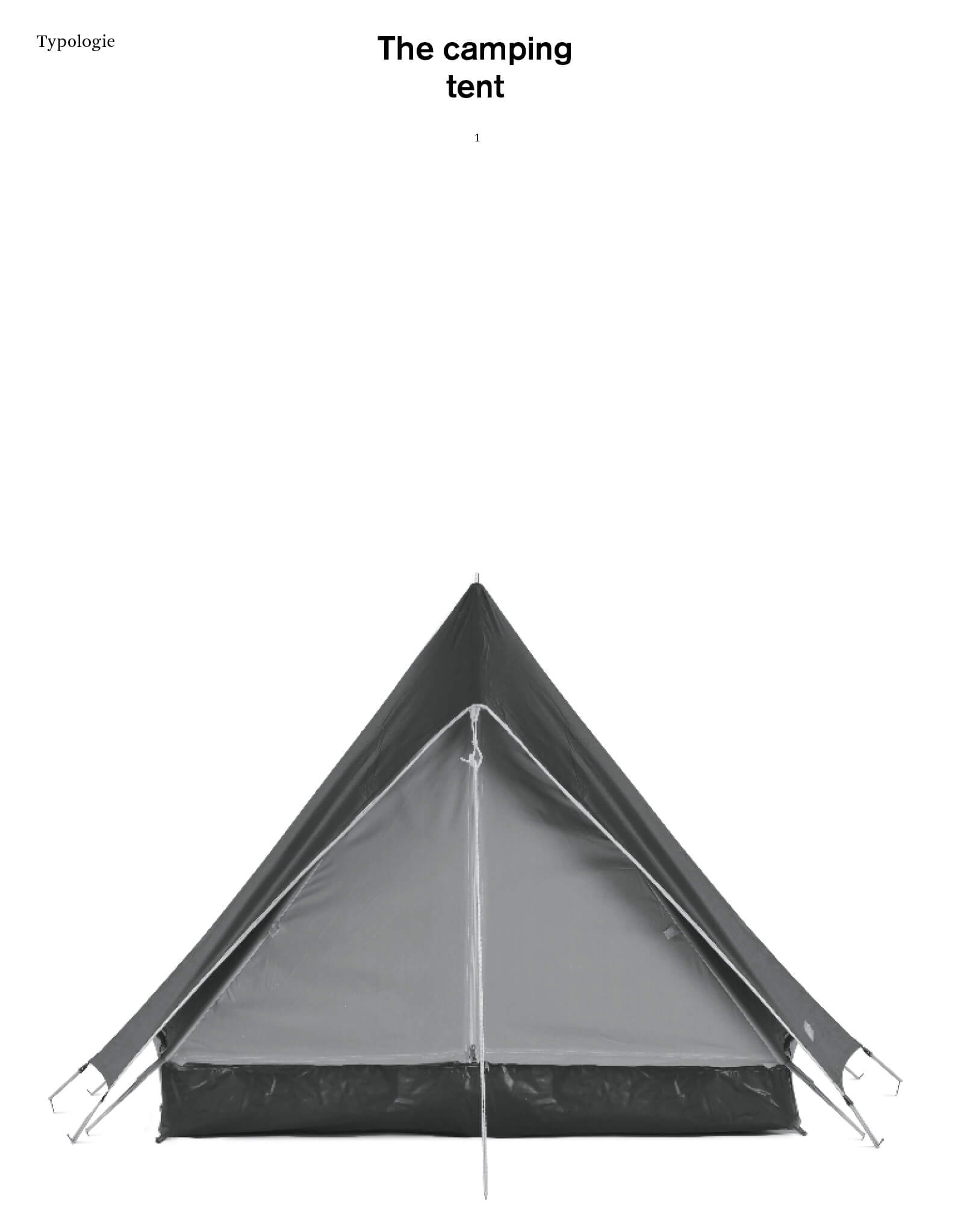
Typologie – The camping tent
Sina Sohrab, Olivier Sirost and 2 more
Collections Typologie reveal a new issue devoted to the Camping Tent. A common motif in both rural and urban landscapes, the tent is a ubiquitous typology whose apparent simplicity is deceptive. Halfway between the architecture we manipulate and the furniture we live in, the tent covers a wide range of uses and brings together heterogeneous realities. Reminiscent of primitive huts, descended from military encampments, shelter for leisure or refuge, precarious yet resistant, protective yet porous, tents are used in both delineated and extreme environments. Simply assembled from ultra-high-performance materials, they are designed in the West and produced in Southeast Asia. Even more than the single-material objects studied in previous Typologie reviews, this composite object makes us aware of the complex nature of the things that surround us.
The book is composed of 136 pages and published both in a French and an English version. As in the former issues, the first part of the book gather a collection of 60 tents from all around the world showing the wide diversity of shape of this object. This part is carefully photographed and reproduced in black and white along 88 pages.
The second part of the book put together an introduction text by journalist Sina Sohrab and a crossed interview between three professionals who are sensitive to and knowledgeable about it: Olivier Sirost, historian and sociologist specialized in Camping, Anna Ferrino, director of the Italian company Ferrino, the oldest manufacturer of tent in Europe and Raphael Têtedoie, a designer of outdoor gears and expert in tent.
This section, which spans 48 pages, is illustrated with a photo report from a Chinese factory, archival images, and a photographic series by Anaick Lejart and Marine Armandin.
Texts by Sina Sohrab, Olivier Sirost, Anna Ferrino, Raphaël Têtedoie.
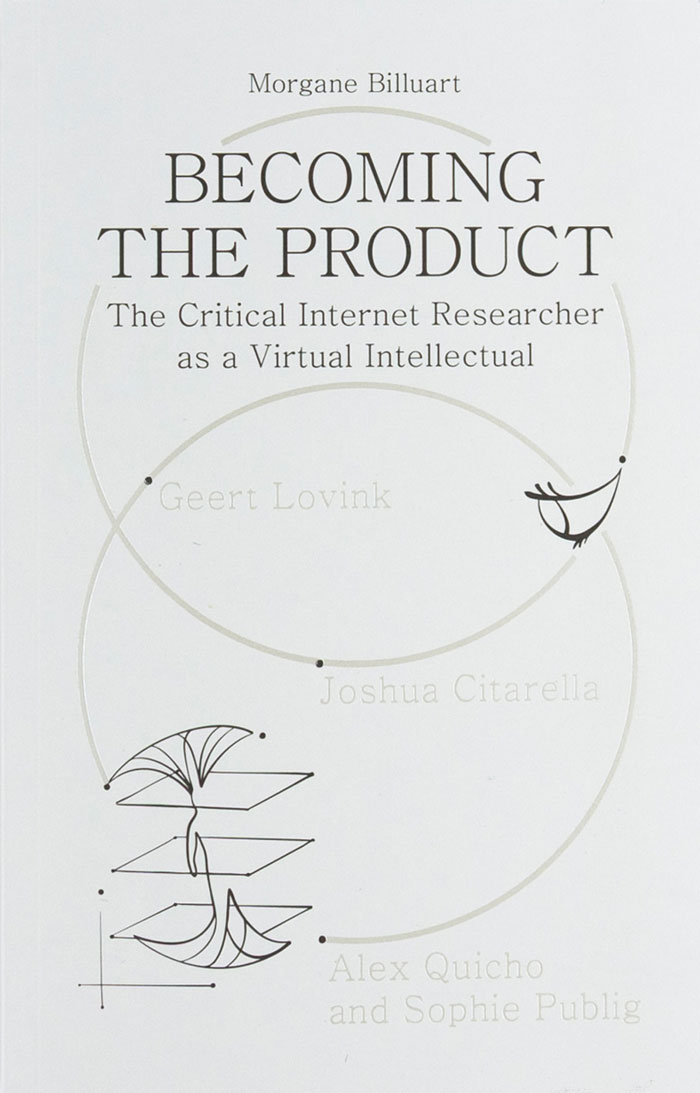
Becoming the Product
In Becoming the Product: The Critical Internet Researcher as a Virtual Intellectual, the evolution of critical internet research takes center stage. By examining the pioneering work of early net critic Geert Lovink and the influencer-style approach of internet theorist Joshua Citarella, as well as the practices of Alex Quicho and Sophie Public, this essay delves into the diverse strategies internet researchers adopt to share their work and sustain their careers more or less independently in today's era defined by the attention economy.
Charting the rise of subscription-based platforms and the increasing importance of engagement-driven metrics, Becoming the Product uncovers the tension between intellectual critique and the pressures of commodification. As the lines blur between rigorous scholarship, aesthetic branding, and market-driven content, Becoming the Product investigates the future of critical internet research and the sustainability of critical thinking as we know it in the digital age.
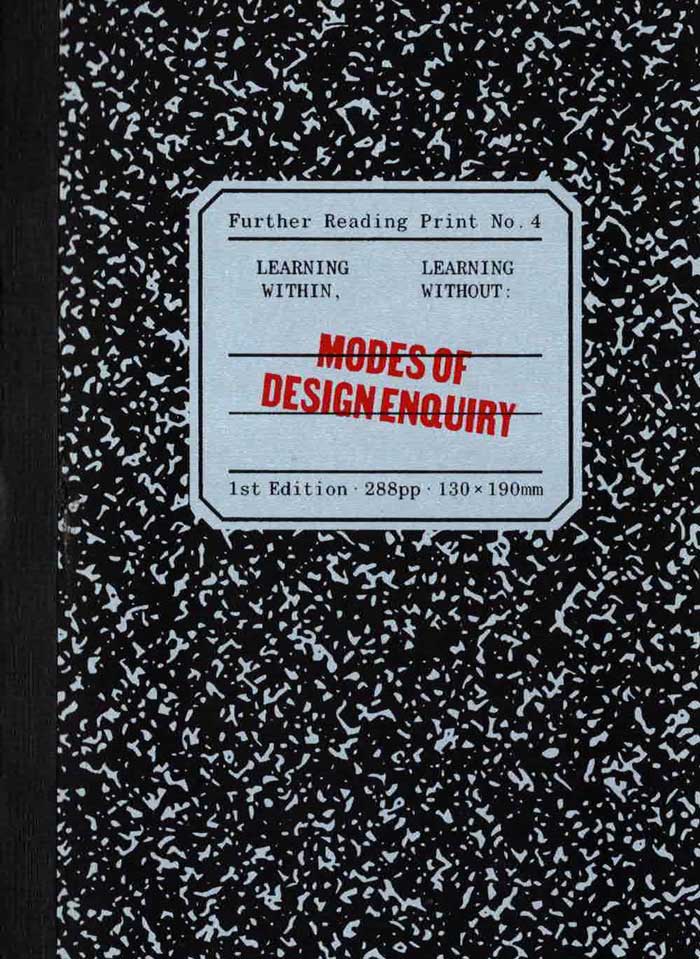
No.4: Learning Within, Learning Without
Januar Rianto, Almer Mikhail and 1 more
There is no one-size-fits-all approach to design. It is as much a practice as it is a methodology or way of thinking, a multifaceted discipline that moves with society’s progression. Throughout the creative process behind every design, learnings happen. Designers learn to adapt, adjusting their positions relative to the context. This volume spotlights self-organised, spontaneous, sporadic, and informal educational initiatives within the realm of creative practices, both historical and contemporary. The initiatives presented here show that any attempt to control a narrative and limit it to a single understanding risks stifling potential innovations that might arise from unexpected origins.
Featuring contributions from Amanda Ariawan, Andriew Budiman, Carlos Romo-Melgar, Chabib Duto Hapsoro, Czar Kristoff J.P., Filippo Sciascia, Fiorent Fernisia, Gideon Kong, Jacob Lindgren, Jeremy Sharma, Keni K. Soeriaatmadja, Limestone Books, Livian Aurel V. Purwanto, Mac Andre Arboleda, Nishkra, Prananda L. Malasan, R.A. Dita Saraswati, Reza Afisina, Rouzel Waworuntu Saad, Savira Aristi, Trevor Embury, and Virliany Rizqia Putri.
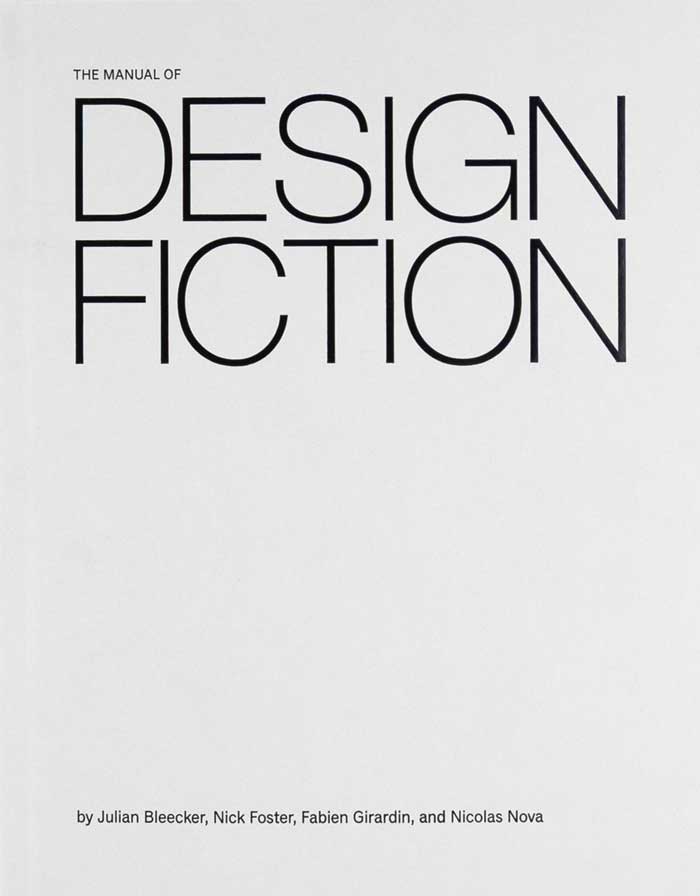
The Manual of Design Fiction
Julian Bleecker, Nick Foster and 2 more
Design Fiction is a method to vividly render tangible futures by creating material artifacts that represent the implications of change. Design Fiction is as much a mindset as it is a methodology whereby foresight, research, expectations, strategic direction, and planning can be cohered into representational ‘artifacts from possible futures.’from possible futures. Design fiction opens up new conversations and considerations whilst augmenting existing, well-trodden research and foresight practices.
Over fifteen years in the making, this book explores the origins of design fiction, and details the practical approach to assessing the consequences of decision making by creating tangible artifacts from possible futures. Design fiction opens up new conversations and considerations whilst augmenting existing, well-trodden research and foresight practices. The writers of this book have used design fiction approaches with clients such as Apple, Warner Bros, IKEA, Edelman, Dubai Museum of the Future, Google and Facebook, and they aim to bring these techniques to a wider audience through the publication of this book.
Written by Julian Bleecker, Nick Foster, Fabien Girardin and Nicolas Nova in collaboration with Patrick Pittman and Chris Frey of No Media Co. Designed by Chris Lange
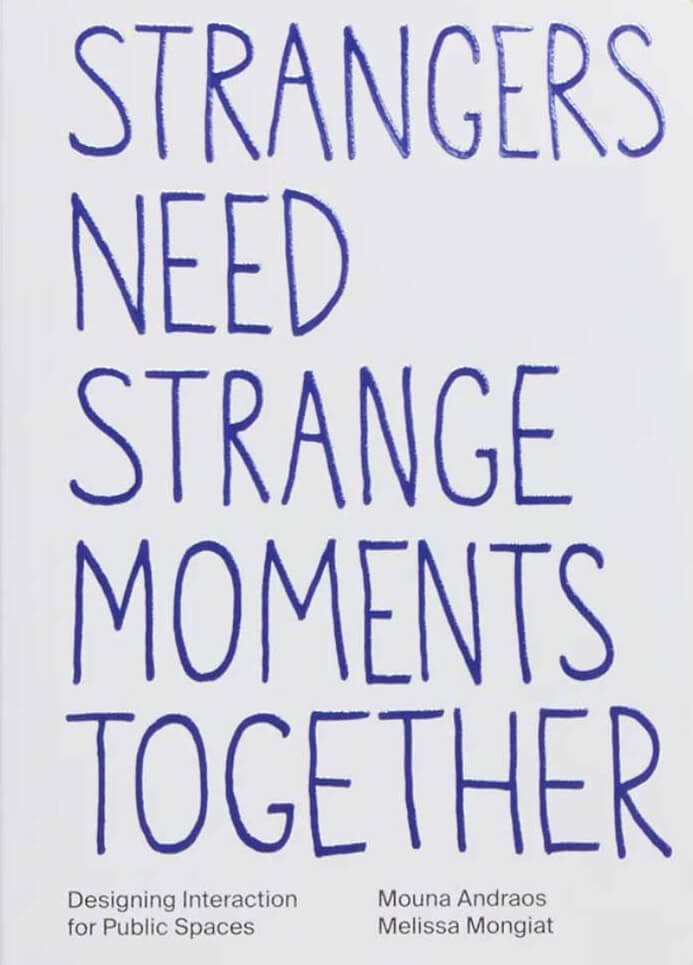
Strangers need strange moments together
Melissa Mongiat, Mouna Andraos
This book frequently uses the word ‘we’. We, as in the general public, engaged citizens, humans of planet Earth… And we, Mouna Andraos and Melissa Mongiat, together with our team at Daily tous les jours, as we seek new models for living together. Welcome to our journal.
We crave living in environments that support us, nourish us and inspire us. We dream of places to go through our lives together, inclusively and tolerantly. Can we re-enchant the raw material of our collective daily experiences? We have been creating interactive art and narrative experiences in public spaces around the world for fifteen years. Using music, dance, art, and other mediums to emphasize the joyful, whimsical, and unexpected, we create moments of connection and care between strangers.
Through this book, we share our experience in building an emergent practice combining technology, storytelling, performance, and design, while asking fundamental questions to create meaningful work in a world in crisis. Meet us outside the urban masterplan, where we experiment with infrastructure for the human spirit.